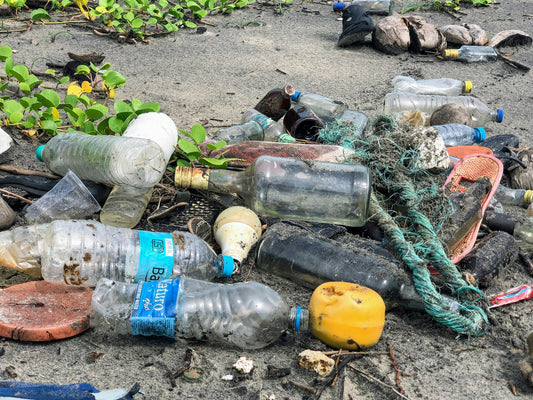Share
Sustainability has become the main theme in the fashion industry, and many brands at every level claim that they care about being environmentally friendly and ethically responsible. Recycled materials and carbon-neutral pledges are now key elements of how fashion is marketed.
Even so, increased attention shows that the industry is not always following its policies. Some businesses use eco-friendly terms but do not clearly show that their actions are making a difference. This is what we call greenwashing. Misleading terms, the choice of what to report, and the use of unproven certificates usually hide the fact that businesses are not sustainable.
This article explains what sustainable fashion is, examines common marketing promises, and provides guidance on distinguishing between genuine sustainability and marketing claims.

Defining Sustainable Fashion: Standards, Not Slogans
Sustainable fashion is about making, using, and selling clothing and accessories with less harm to the environment and more care for people. It means taking real actions to reduce harm at every stage of the product’s life, from getting raw materials to disposal.
Sustainable fashion is built around clear and verifiable standards. Some examples are internationally recognized certifications like:
|
GOTS (Global Organic Textile Standard) |
It ensures that at least 70% of the fibers used must be certified organic. Harsh chemicals and toxic dyes are not allowed in the process. |
|
OEKO-TEX Standard 100 |
This standard means textiles are tested for dangerous chemicals and must meet high safety requirements. |
|
Fair Trade Certified |
It means that labor is fair, the workplace is safe, and information about the supply chain is clear. |
|
Bluesign® |
Prioritizes using resources efficiently and safely with chemicals during manufacturing. |
Being sustainable also means that companies can trace their products along four important pillars.
- Raw Materials: Renewable and low-impact fibers such as organic cotton, hemp, or TENCEL™ are better choices than conventional cotton or virgin synthetic fiber.
- Production Methods: Use of low-impact dyes, water conservation, and energy-efficient manufacturing processes.
- Labor Ethics: Adherence to fair wages, safe places to work, and a ban on child or forced labor are part of Labor Ethics.
-
Product Lifecycle: Designing objects so they can be used for a long time, recycled, and produce less waste is part of moving to circular systems.
Sustainable fashion covers more than just a single eco-friendly collection or recycled clothes. It means following the same practices across the company, which third-party organizations verify. When there is no external review and full transparency, “sustainable” is just a claim.
What is Greenwashing in Fashion
When companies in fashion overstate or mislead about their efforts to be sustainable, it is called greenwashing. It involves using terms, images, and statements that seem sustainable, but there is not enough proof, certificates, or regular actions to back them up.
|
A 2021 report by the Changing Markets Foundation found that 60% of claims by giant fashion companies, including Zara, H&M, are unsubstantiated and misleading consumers. Updated industry trends for 2025 continue to reference this 60% figure. |
Fashion brands are among some of the worst greenwashing brands. They often use greenwashing through:
Vague Terminology:
Using vague terms like “eco-conscious,” “sustainably made,” or “planet-friendly” without giving proof or explanation.
Selective Disclosure:
Highlighting a small group of organic cotton clothes while most of the brand’s items are made from resource-heavy synthetics.
Deceptive Images:
Using natural images, green colors, and earthy packaging to make people think the product is environmentally friendly, when that may not be true.
Unverified Claims:
Statements concerning carbon neutrality, ethical sourcing, or recycled content that do not have third-party confirmation or a clear supply chain.
These tactics take the focus off the fast fashion, worker abuse, and damage to the environment that are still common in big fashion businesses.
|
An authentic report reveals that in the UK alone, 23 million returned garments were incinerated or sent to landfill in 2022, generating 750,000 metric tonnes of CO₂ emissions. This was often due to a poor fit and the fast fashion model. |
Our detailed discussion on what is greenwashing and why it is unethical covers the wider consequences, such as how lying in ads reduces trust, slows real improvement, and tricks buyers.
What Sustainability Claims Actually Mean?
Many fashion brands use familiar, environmentally friendly words to draw in consumers who care about the earth. Still, if there are no set standards or checks by third parties, these terms can be misleading.
|
The fashion industry contributes approximately 35% of all primary microplastic pollution in the oceans, primarily from the laundering of synthetic textiles such as polyester, nylon, and acrylic. Polyester alone accounts for about 73% of these microplastics, shedding fibers that can persist in the environment for over 100 years. |
“Carbon Neutral”
Many brands claim to be carbon neutral by cancelling out their greenhouse gases through actions such as reforestation or using renewable energy credits. Offsets should not be seen as the same as actual emission reductions.
Key problem
Most fashion brands do not reveal their complete carbon footprint and more often choose to offset the emissions instead of cutting them at the source (by switching to renewable energy or improved logistics).
What to look for?
Companies should have certified carbon footprint data and be following the Science Based Targets initiative (SBTi).
“Recycled Materials”
Claims of using recycled fabrics usually refer to polyester made from post-consumer plastic bottles or pre-consumer textile waste. Despite this, using recycled polyester leads to the release of microplastics and requires a lot of energy to produce.
Issue to Consider
Most companies do not mention the recycled content in their products. A garment with just 20% recycled content can still be described as made with recycled materials.
What You Should Check
For brands that have the Global Recycled Standard (GRS) and clearly state how much of a product is made from recycled materials.
“Vegan Leather”
Vegan leather avoids animal products, but it is not always eco-friendly. Most alternatives are made using synthetic polymers such as polyurethane or polyvinyl chloride, both of which are made from fossil fuels.
Problem
PU-based leather alternatives may cause environmental problems because they require chemicals and cannot biodegrade.
What to Check
Plant-based products (for example, pineapple leather and mushroom mycelium) that clearly state their ingredients, how they are processed, and what happens to them at the end of their lifespan.
“Conscious Collection” or “Eco Line”
When a brand promotes a specific sustainable line, often marketed as conscious, green, or eco-friendly, it is usually a small subset of the company’s total inventory.
Key Issue
These capsule collections are often used to shift perception without addressing the company’s overall supply chain, labor practices, or production volume.
What to Look For?
Brand-wide policies, annual sustainability reports, and whether sustainable practices apply across all operations, not just in select marketing campaigns.
The Road Ahead: What True Sustainability Looks Like
Real sustainability in fashion is not a marketing label, it is a system-wide shift grounded in transparency, accountability, and long-term impact. Brands committed to this shift focus on:
Responsible Materials
Use of certified organic, regenerative, or low-impact fibers backed by verified standards.
Transparent Supply Chains
Clear reporting on sourcing, labor conditions, and environmental practices across all production tiers.
Circular Design Principles
Products built to last, repair, and re-enter the production cycle. This minimizes waste from the outset.
Reduction Before Offsetting
Prioritizing actual emissions cuts over reliance on carbon offsets or pledges without plans.
Avoiding misleading sustainability claims requires more than good intentions. It demands clear communication, traceable action, and strong internal policies on how businesses can avoid greenwashing.
If you truly care about the planet, choose products and brands whose sustainability is proven, not just promised by green words.
We hope you enjoyed this article. Please feel free to leave a comment below if you want to engage in the discussion.
If you want to read more like this, make sure to check out our Blog and follow us on Instagram. If you are interested in truly sustainable products, check out our Shop.








